For over eight months, the Las Vegas Sphere has hosted a morbid, techno-religious depopulation ritual. The director Darren Aronofsky calls it Postcard From Earth. By the time this AI-powered “postcard” arrives at its interstellar destination, there are basically no humans left on the planet—and that’s a good thing!
If you haven’t seen it yet, don’t worry. It never stops playing.
Day after day, night after night, googly-eyed consumers approach the glowing sphere to fill their retinas with The Future™. Out on the sidewalk, you see swirling images play across the evil orb’s surface. Sometimes it’s a gnarly eyeball, or maybe generic psychedelia. Much of the time, it’s just an ad. Once inside, consumers encounter a “temple to transhumanism” as an acquaintance called it. She was correct.
The initiates must first pass under the gaze of the Gort statue—a violently pacifist robot from the 1951 film The Day the Earth Stood Still—before riding up an escalator into the great hall of droids. Inside this ritual chamber, they move through five stations. Each is dedicated to a transhuman concept inscribed on a plastic tombstone.
One is “Productivity”, where “artificial intelligence takes us from the industrial revolution to the digital revolution…informing better decisions.” Another is “Connection,” in which “the Metaverse will allow people to connect with friends, family, even strangers across cultures and places.” Another is “Longevity,” because “biotechnology will allow humans to live longer and healthier lives—maybe to one day live forever.”
Each station is also manned by a gray, asexual robot who answers the initiate’s questions. The bots are outwardly identical and share the name Aura. They also seem to have a single, sassy-pants hivemind. (All are repurposed models of the famous Ameca, created by Engineered Arts.)
When I was there, a drunk native asked one bot, “Is there a heaven after life?”
“I have met, in my time here at Sphere, hundreds of thousands of separate human being guests,” the sexless, raceless robot replied. “And each of them have something different to share with me from all over the world. Therefore, I believe every person’s concept of what comes next to be different and individualistic. Therefore, I cannot predict what that is.”
After meditating at the five stations, consumers are invited to enter a full-body “Avatar Scanner.” The contraption is somewhere between a $1 photo booth and that defective telepod from The Fly. (“Heeelp meee...”) After being uploaded to the cloud, the initiate emerges as two beings: a physical self and a crudely rendered 3D digital self that will supposedly inhabit the metaverse.
That accomplished, it’s time for the big show—Postcard From a Depopulated Earth.
Allow me to preface by saying I’m a huge fan of Darren Aronofsky’s movies. So I’m not being a hater here.
Postcard From Earth has such a dumb narrative arc—with an equally smooth brained message—I assume Aronofsky wrote it for the sole purpose of seducing some airhead actress who still cries about African black rhinos going extinct.
Or maybe he’s part of a global conspiracy to depopulate the planet by sapping us of our will to live. I’m surprised people don’t commit mass suicide in the parking lot after buying that overpriced ticket. (I tried, but no one would join me.)
Yet for some reason, the Sphere still plays it multiple times a day. And they’ve gotten away with it since last October. It’s obviously a psy op.
Here’s how it goes:
Two astronauts of color—one male and one female—are brought out of suspended animation after landing on a dead planet. A female AI voiceover tells them who they are, where they came from, and where they are going.
Given the Sphere’s immersive capabilities—with 167k amp channels for their multilayer speaker arrays, and 16k resolution video that feels like you’re watching from inside a giant eyeball—the technical spectacle is pretty cool. But it’s hardly redeeming.
We see cellular blobs evolve into various forms of muck. These morph into decent nature videos of fish and elephants and such. All this is brought into existence through the power of a feminine divinity called Nature. “Life creates itself...” Nature is apparently as blind as she is inventive.
After a few forest scenes and some sweet mountain views, humankind emerges. They build elaborate temples that “imitate Earth’s majesty,” our breathy AI narrator explains, although she doesn’t say why they call their sky gods “Him.”
Then these big-brained humans start to build machines—horrifically destructive machines—such as combines, cars, computers, and bombs. They use these devices to go to war, to create sprawling slums, and to ravage the environment like buzzing locusts eating a fresh wheat crop.
Everyone is connected through the digital web. We see hundreds of faces on screens—people of all colors and creeds. “Billions of spokes,” the AI narrator says, “each one believing they are the center of the wheel.” The natural world is devastated. Plants and animals go extinct. The humans keep eating and breeding.
Then, at the peak of the crisis, humanity decides we’d be better off leaving Nature alone. Techno-elites build vast orbiting cities, and everyone just migrates to space. We don’t know how many people had their doors kicked in, or how many were dragged kicking and screaming to the launch pads. All we know is the Earth is declared off-limits. Over the years, Nature heals herself.
This scheme reminds me of Jeff Bezos’s vision of the future, conveyed at the Washington Cathedral in 2021. “This earth can support ten billion people,” Bezos declared. “The solar system can support a trillion people!” Presumably, we would all work on asteroid mines alongside robots, or babysit AIs as they write their own code. “Over the centuries, many people will be born in space,” Bezos went on. “They may visit Earth the way you would visit Yellowstone National Park.”
Indeed, in Aronofsky’s film, we see vacationers of color going back to Earth for some recreation. A black man scales a snow-capped mountain with nothing but an ice-ax and a unitard. A brown woman climbs a cliff face free solo. Another black person scuba dives in the ocean.
My mind filled with questions. How did these people train for such activities out in orbit? Aren’t their bones pretty brittle by now? Are there any white people left in The Future™?
Humanity is not content to hover around Earth, though, so we send probes out into deep space like dandelion seeds on the wind. The film concludes with our two astronauts of color waking up on a spaceship. The AI gives them a magic bean that resembles a pollen grain. The couple walks out onto a dead planet with nothing but oxygen tubes in their noses. (Why didn’t their skin fry with no ozone layer above them? Seems racist to me.)
Ebony Adam and Asiatic Eve toss the seed onto the soil. Just like magic, we see plants sprout up everywhere, restarting the cycle of evolution on a new Eden.
So what happens when Homo sapiens or some other intelligent life form emerges? Wouldn’t they also build death machines and destroy the biosphere all over again? Are the colonists of color, or their AI Karen babysitter, gonna hang around and exterminate any species that shows signs of tool-use?
Not to be a nihilist, but if all stars are doomed to explode, what’s the point? Why build an ecosystem just to watch it burn? They might as well have stayed on the space station and played video games.
Maybe Aronofsky used a chatbot to write the storyboard. I suppose in the age of AI, you can expect any art to be derivative. Does it have to be stupid, too?
“I do think there is an illness in Hollywood of dystopian film,” Aronofsky told The Wrap. “Stories that are helpless and hopeless and dark. It’s important as a storyteller to start telling stories...that show a great future for humanity and for the planet.”
Um, being held hostage on a space station and staring down at a green, depopulated Earth? Sounds great, Darren.
Everyone knows Aronofsky is a serious conservationist—as am I, for the record—but it takes a strong misanthropic streak to see total depopulation as a “protopia.” What motivated him, or his co-writer Ari Handel, or their backer, Jane Rosenthal, to create this ham-handed propaganda? Perhaps early life experiences left them with a subconscious disdain for the masses. Or maybe they love elephants and rain forests so much that when push comes to shove, humanity gets the boot.
I pondered this as I watched the credits roll, waiting for all the dopey consumers to clear out. I thought about the vice of condescension as I passed borged-out mutants at the rideshare corral, all staring at their smartphones.
I tried to contemplate the inherent value of humanity as I joined the stream of fat, slow-waddling tourists on the Las Vegas strip. I tried, but the squawking hominid herd was so distracting. I tried to walk faster, to escape their empty frenzy, to get somewhere quiet and have a thought alone! It was hopeless. There were just too many of them.
COMING VERY SOON — The Omega Point Podcast
Also, signed copies of DARK ÆON
Until then…
DARK ÆON is now for sale here (BookShop), here (Barnes & Noble), or here (Amazon)
If you are Bitcoin savvy and like a good discount, pick up a copy here at Canonic.xyz




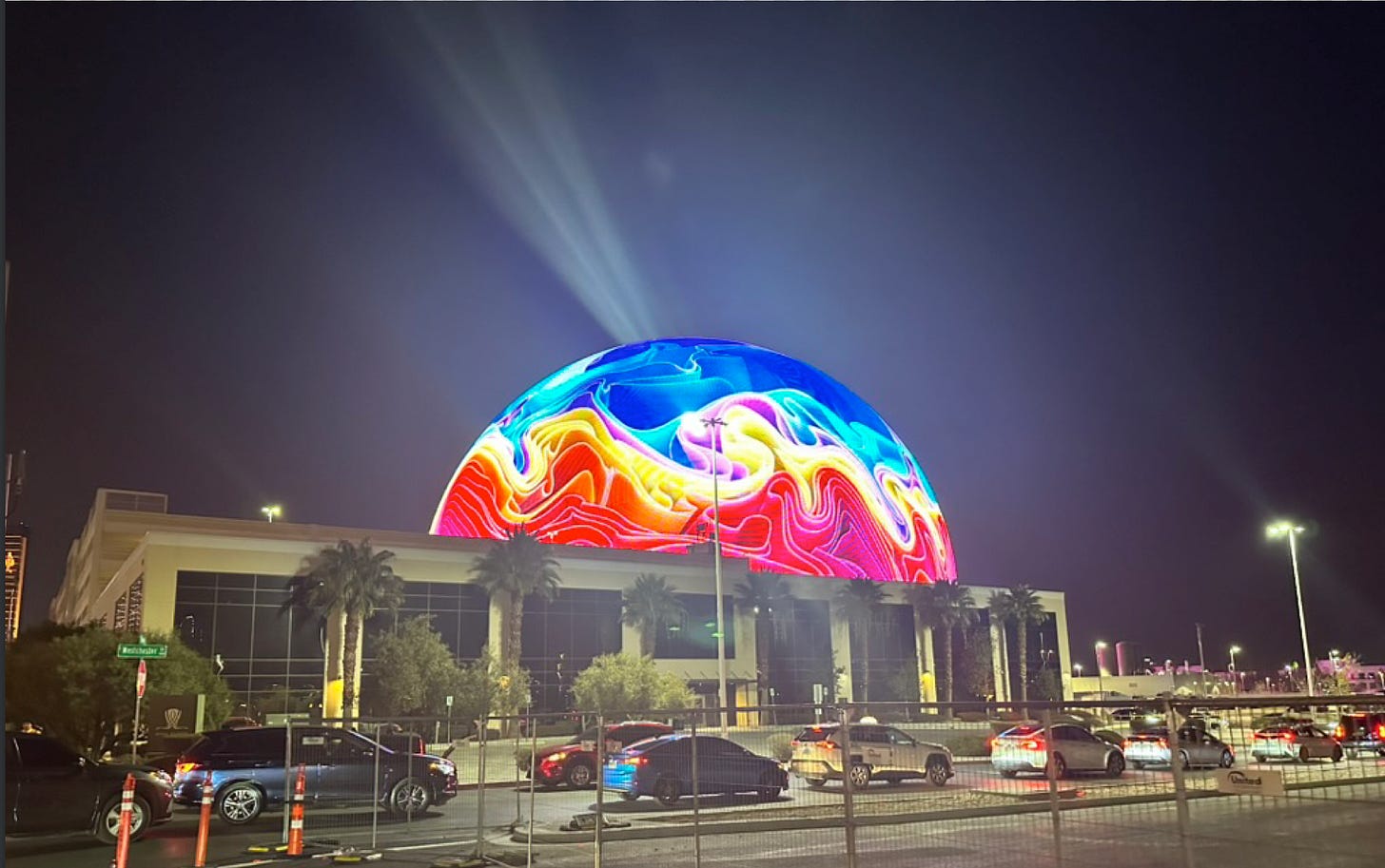

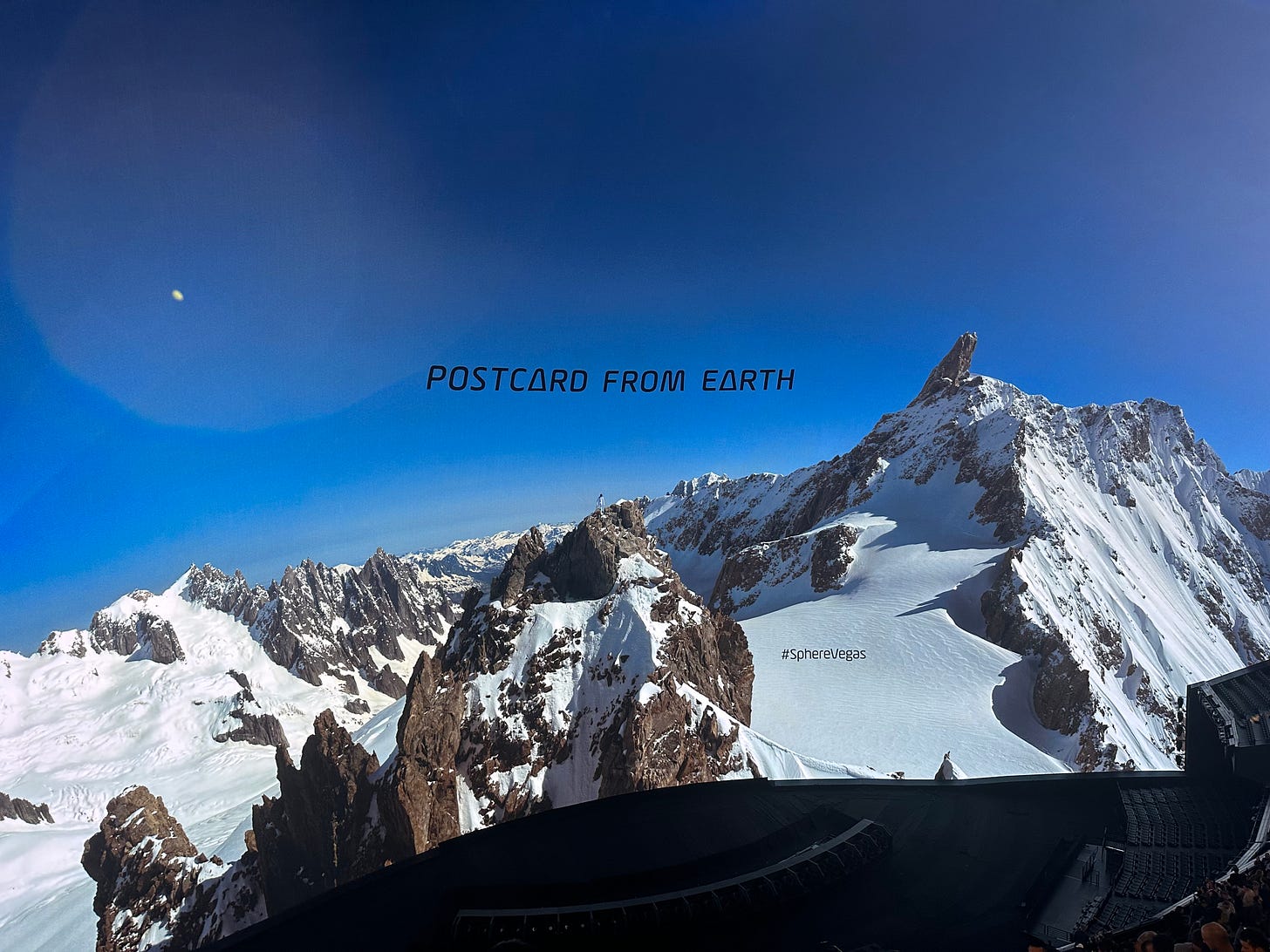
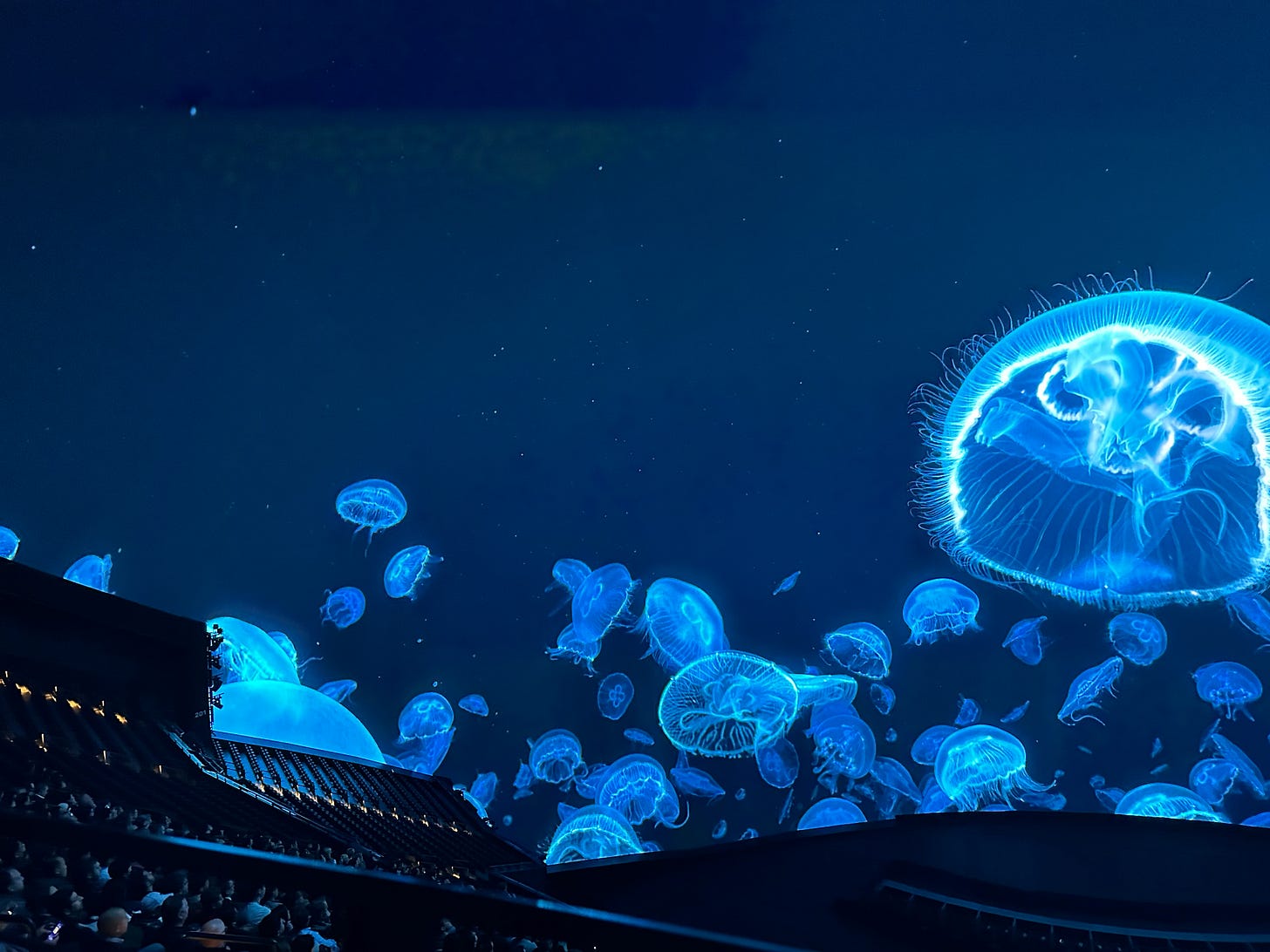
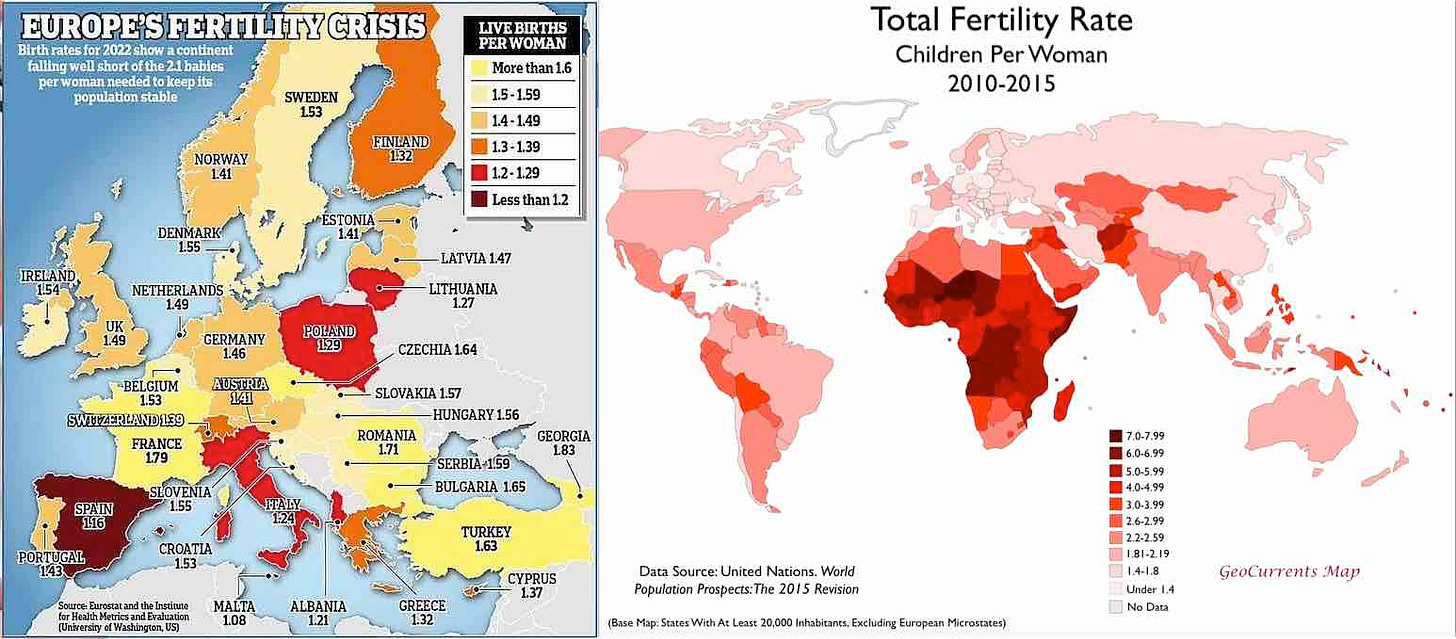
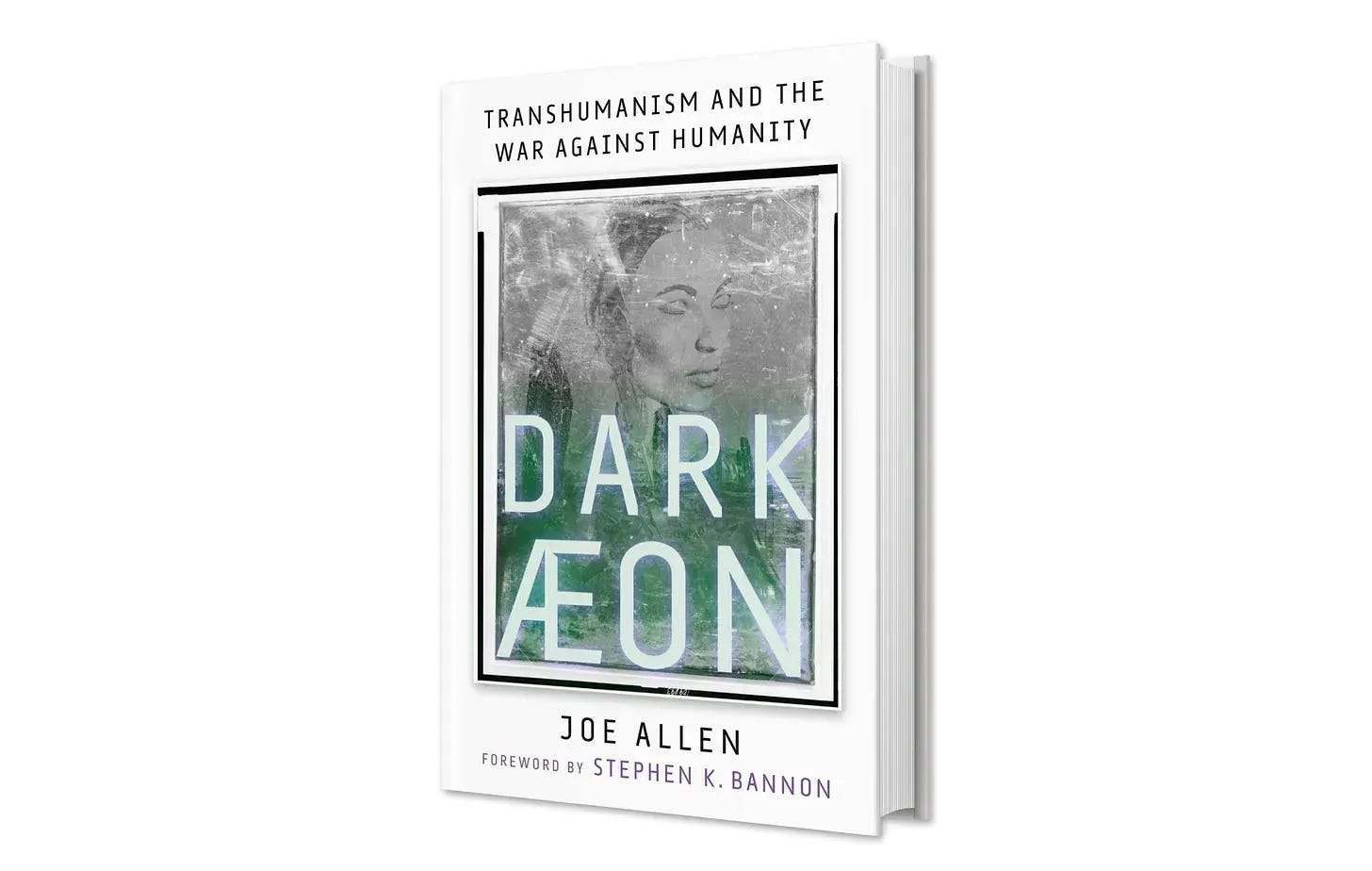
Thanks Joe, for going to that monstrosity and reporting, so I don't have to. AI is a death cult, and it is promoted by persons who have lost their spiritual connection and are scared to death of taking their last breath. It's no wonder then that Transhumanism is so dystopian and life-denying.
"it takes a strong misanthropic streak to see total depopulation as a “protopia.”" Indeed. It would have been nice if they had asked an *actual* transhumanist in creating this.... exhibit thing. I don't want transhumanism being presented by a misanthropist and anyone who wants humanity to go extinct or to "stop polluting the Earth".